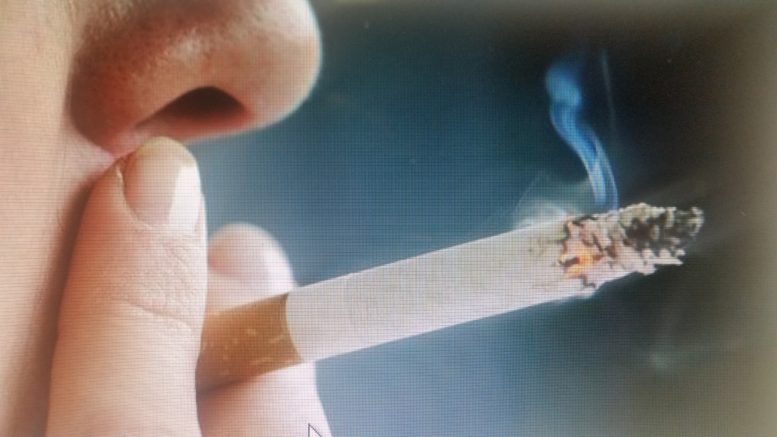By JAN LARSON McLAUGHLIN
BG Independent News
Trying to regulate tobacco products has become a game of Whack-a-mole. As soon as standards are established for one product, the innovative tobacco industry comes up with another one.
“We regulate one product and another one pops up,” said Tom Geist, regional director for the Tobacco 21 program.
So instead of spending all their efforts chasing new products, Tobacco 21 organizers are trying to convince municipalities and states to bump up the legal age for tobacco products to 21 years old. In Ohio, five communities have increased the legal age: Cleveland, New Albany, Bexley, Grandview Heights and Upper Arlington. Two states – California and Hawaii – have increased the age statewide.
As of last Friday, there were 190 cities in 14 states that have adopted ordinances making 21 the legal age for tobacco. Geist has set his sights on adding Bowling Green, Toledo, Athens, Dayton and Columbus to the list.
Geist spoke to members of the Wood County Prevention Coalition Friday at the Wood County Educational Service Center, explaining the reasons for Tobacco 21.
First, tobacco is deadly. According to widely accepted numbers from national health institutions, tobacco is responsible for one in five deaths in the U.S.
“It is the worst failure of American public health in the last 100 years,” he said.
Smoking kills between 500,000 and 600,000 a year in the U.S. That’s more people each year than all of the Americans killed in World War II. Put in a more graphic manner, it’s like three packed 747 airplanes crashing and burning daily, Geist said.
Several health issues have been linked to smoking, some of which greatly diminish the quality of life. “It’s not just death, it’s the road there,” Geist said. “One that’s entirely avoidable.”
Smoking also causes several neonatal problems, and doubles the infant mortality rate for babies when their mothers’ smoke during pregnancy.
Second, by making tobacco illegal before age 21, several young people may be stopped from smoking as youth – and as adults, Geist said. The average age of smoking “initiation” is 14 to 15.
“If you can keep kids from smoking until they are 21, it’s very unlikely they will start smoking,” he said. “Teenagers are not the best at decision making. Teenage brains are wired to take risks, set themselves apart.”
But if legalized smoking can be discouraged until age 21, by that time their brains have grown enough to know better than pick up the habit, Geist said.
Surveys show that 27 percent of Ohio’s high school seniors have used tobacco in the last 30 days. “People think tobacco won’t hurt you for a while,” he said. But the neuro-toxins make the users predisposed to use other substances, Geist said. Kids who smoke have higher drop-out rates, have higher rates of depression and anxiety, and have a much harder time kicking the habit as adults.
Third, addictive nicotine is again being marketed to youth – this time it’s the e-cigs or vaporizers, according to Geist. The e-cigs come in countless flavors, like vanilla, cherry or bubblegum, which make them seem so innocent. They are advertised using images of sex, candy, or high school settings as lures.
The public should not be fooled by the tobacco industry’s claim that the primary purpose for e-cigs is to help smokers quit traditional cigarettes, he said.
“They are touted as a cessation device, but their biggest market is kids,” Geist said. So instead of decreasing smoking levels, some are blaming e-cigs as playing the role of gateway to more tobacco use.
“They are recruiting kids who would never have smoked cigarettes in the first place,” he said.
Hookah is also being blamed for an uptick in youth tobacco use since 2014.
“It is certainly not healthier for you,” Geist said.
Fourth, other “risky” activities are not legally permitted until age 21, such as gambling and drinking alcohol. “So what we’re doing is aligning tobacco with other risky behaviors,” he said.
The Tobacco 21 program has worked elsewhere, and costs taxpayers virtually nothing, according to Geist. A pediatrician in Needham, Massachusetts, started the first effort in that city. Even though no other city in the region raised its smoking age, Needham saw a huge decrease in youth smoking rates. That’s because 90 percent of kids get their cigarettes from friends, or “social sources,” Geist said.
The program focuses on illegal sales to those under 21, not on the purchases, since the youth are seen as “victims.” Though some criticize the Tobacco 21 program of creating a “nanny state,” Geist said he is not aware of any businesses failing because of the law.




